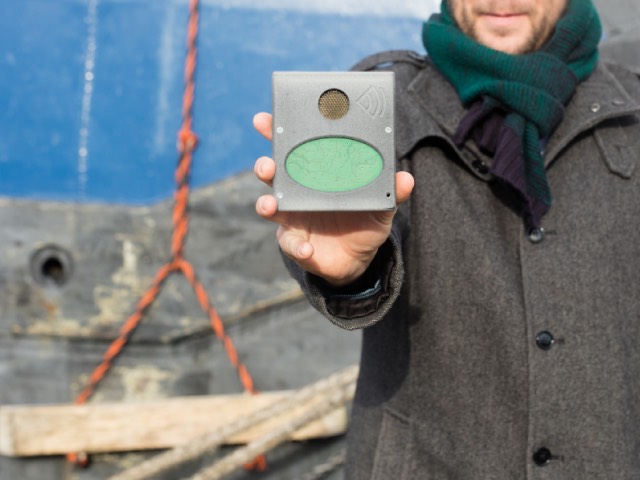Researchers at UAntwerp and the Port of Antwerp are testing how 3D sonar sensors can be used to improve awareness of a ship’s surroundings for autonomous shipping.
The researchers developed a 3D sonar sensor with 32 sophisticated waterproof microphones as part of the ’embedded Real Time Imaging Sonar’ (eRTIS) project.
Prof. Jan Steckel at CoSys-Lab, a research group in UAntwerp’s Faculty of Applied Engineering, develops advanced sensor systems that can withstand harsh conditions. He explained: “In order to achieve fully autonomous navigation, constant monitoring of the ship’s surroundings is absolutely crucial. Cameras can be used, of course, but when visibility is poor – due to dust, water sprays, mud, smoke or fog – they don’t work properly.”
With the 3D sonar sensor, the information is transmitted in real time. Prof. Steckel explained: “If there are any delays, the ship could crash into something. The ‘Imaging Sonar’ part refers to reflected sound waves hitting the sensors to create a picture of the surroundings.”
According to Prof. Steckel, the technology was inspired by the way bats see the world. “We drew our inspiration from the way bats use echolocation. They emit sound waves, and when those waves hit objects, the bats hear the echoes of these collisions, allowing them to avoid obstacles flawlessly.”
In the last weeks of 2020, the technology was successfully tested on the Tuimelaar, one of the Port of Antwerp’s test vessels. In 2021, there will be a follow-up project: as part of the Smart Docking Innovation Challenge, the Port of Antwerp has given the green light to Prof. Jan Steckel’s 3D Sonar and Lidar for Vessel Monitoring project.









































